M150 mixture consumption. Construction mixture on cement-sand-based
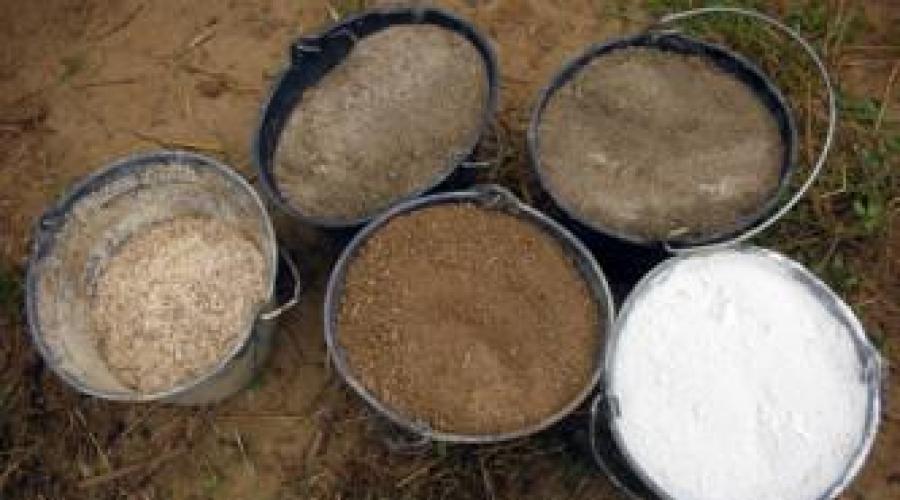
; GOST 30515-97
Dry sand, fractionated TU 5711-002-05071329-2003 Combined composition of fractions: 0.1 mm - 1 mm
Mineral powder.
To improve properties, mineral or organic additives can be added to the mixture.
Specifications:
Due to its versatility, this mixture is highly popular among builders as one of the main building materials Wide destination.
The composition includes cement, mineral powder and dry sand different fractions - shallow 0.1 - 0.5 mm and middle 0.5 - 1.0 mm.
Dry mixture M-150 Universal meets the requirements of the GOST standard 28013-98.
Preparation of mortar mixture:
Pure cold water is used to prepare a solution (temperature from +14 to + 20 ° C).
When preparation, it is necessary to monitor the observance of the dosage of water at the rate of 1.2-1.3 l per 10 kg of the mixture. The mixture with water is thoroughly mixed in a concrete mixer or a drill with a nozzle before the formation of a homogeneous mass.
Next, you need to wait 5 minutes for ripening and mix again without adding water. The resulting solution retains the properties of not more than 1.5-2 hours at a temperature of 0-40 ° C. Repeated mixing is allowed.
Preparation of the foundation:
Clear surface from dirt, dust and detachments. Remove protrusions, metal elements to protect against corrosion. Remove moss or affected areas, you need to clean the steel brush and treat with fungicidal preparations, in avoiding them followed by their manifestations. When conducting plasteringStrongly absorbed working surface should be carefully moistened. It is necessary to primine surfaces with high density, such as marble or granite and increased moisture absorption such as cellular concrete blocks.
Performance:
The solution is applied to the working surface with a cylma or spatula, the temperature must be no less than +5 degrees, then smoothed by the rule and rubs the grater.
When aligning the surface in several layers, the new layer is applied to fully dried. With a layer thickness from 3 cm, you need to use a plaster grid. It is recommended to produce painting, grinding and sticking wallpaper after applying the last layer. Full surface strength is achieved in a month.
Caution! The cement contained in the M-150 mixture, when interacting with water, can form an alkaline reaction. It is recommended to protect your eyes and skin. When a mixture in the eye contacts, rinse with water and refer to the doctor if necessary.
M-150 mixture consumption:
At layer of application 1cm on the surface of the M-150 mixture is 18-20 kg per 1m2.
Storage:
The M-150 mixture can be stored no more than 6 months from the date of sale, provided that dry, indoor and the integrity of the packaging. When complying with the correctness of storage and transparency, high quality and excellent strength characteristics of the dry mixture are guaranteed.
Packaging:
The mixture is packaged directly at the ICA factory, in the valve paper craft bags. Bags weight - 40 kg.
Cement mixtures are the most common material that people are used in the course of construction and repair work. They produce them on the basis of cement and sand. In order to increase technological properties during production, various additives (plasticizers) are introduced into the product. Cement mixtures use at all stages of production, starting with the foundation and, ending with plastered walls.
To get the finished composition, it is necessary to simply add water and stir for a few minutes. Thanks to such ease of preparation, such compositions are very popular. Consider more detail technical properties M150, as well as ways to apply it.
Dry MDC M150 mixture serves to make shuttering walls, ceilings and other surfaces. In addition, it is possible to use this material under the condition that, during subsequent processing, coloring, spitting and sticking of wallpaper will occur.
The M150 cement mixture can be involved when laying walls, concreting of stairs, floor repair work, sealing walls from concrete and plots where there is a falling plaster. You can apply such a composition to the surface of concrete, brick and cement. The thickness of the applied layer will be 5-50 mm.
How to apply
When you purchased the presented mixture in bulk, it is covered with a container in the construction object, which after the water is sent. In order to get a homogeneous mass, it is necessary to mix the resulting composition thoroughly. When preparing a mixture of M150, the following proportions must be observed: water consumption of 1.8 - 1.9 liters per 10 kg of dry mixture.
What are the cement marks and their application are indicated in this
Deals the finished mixture it is necessary to help a trowel or spatula, but just to do it need to prepare the basis. After the mixture is ready for applying, it is necessary to take care of the surface moisturizing.
On video - cement sand mix M 150:
About what the characteristics of the cement brand M 500 can be found from this
In addition, the surface should be dry, structurally durable and cleaned from various kinds of contaminants. Make sure that there are old materials on the surface, otherwise it will be impossible to achieve a good coupling. In the presence of sprinkling and fragile areas, you need to remove them or repaired. For the terrain, which is covered with mkhami, algae and fungus, it is worth clearing with a steel brush.
After that, it is necessary to apply fungicidal formulations. If the surface is severely, then before applying the composition, it is worthwhile to make moistening or priming in several layers. At the same time, it is necessary to wait until the first layer breathes.
Where and how to use the grade 400 cement, indicated in this
Now you can move to the preparation of the mixture itself. Place in the container required amount clean water. Its temperature should be +15 - +20 degrees. During the production of the solution, it is worth a clear instruction. To obtain a solution of the desired consistency, water consumption can be 1 kg of 190 ml. It is gradually added to the liquid to add a dry mass and perform thorough mixing with a mixer or drill with a nozzle. It is necessary to interfere with the composition of a homogeneous mass. Wait another 5 minutes, and then make stirring again, but it is not necessary to add water to already add. The finished composition can be mixed when it is launched.
After all cooking work was finished, you can proceed to finishing events. Initially, you need to fill large defects and cracks. You can apply the solution using a spatula or brush. After it is well to dissolve with the rule and perform the grout. The grout process can be carried out using a steel or plastic grater.
What consists of cement, you can learn from this
When the layer thickness exceeds 30 mm, then it is necessary to use the plaster grid. If you exercise the wall leveling process, then the M150 will be applied in a single layer. But it is necessary to distribute the subsequent layer only on the condition that the previous one is already completely dry. The top layer after its drying should be aligned and lost. After grinding the base, and then you can go to the blending of the wallpaper. But this can be done only after 24 hours, when the last layer was applied.
During the fulfillment of all works, it is important to observe the temperature and humidity regime. All work must occur with a dry climate, and the air temperature should be +5 - +30 degrees. And the level of humidity should not exceed 80%.
How to use, indicated in the article.
It is necessary to store the acquired mixture in a closed room and no more than six months. Otherwise, the M150 mixture will lose its properties. The manufacturer guarantees the correspondence of the dry mixture if all the storage rules, transportation and use were complied with the requirements of GOST 28013-98. 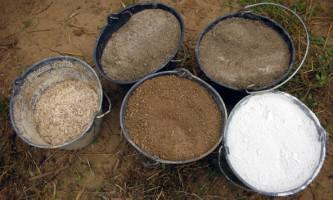
Price
Speaking about the value of the presented product, it should be noted that it will depend on the volume being implemented. For a bag, weighing 25 kg, you will have to give 78 rubles.
What is indicated in this article.
Dry M150 mixture is popular products that are widely used when plastering any surface. Unique properties and composition allow you to achieve an excellent hitch with a surface, increasing its strength. After such a base treatment, all subsequent decoration Materials Will stay on the surface for a long time.
When you go directly to the construction of any design, then after drawing up the project, you must go shopping in search of high-quality materials. To perform various masonry work, the concreting of floors, the construction of walls of bricks, eliminating cracks and other flaws It is worth using a dry cement-sandy mixture.
But in order to save its money, it is necessary to determine in advance the required amount of building material. Here you need to calculate the flow, which, in turn, depends on the type of construction.

The mixture, which contains dry sand and cement, today is very in demand. The reason for such popularity is explained by the simplicity of preparation, low cost and effective result.
To get the necessary solution, you just need to add water in the desired proportion. However, today you can purchase a product, as part of plasticizers. It is from the type of these components that will depend on the characteristics of the finished solution.
Manufacturers use chemical additives in the cooking process, since it is possible to improve the properties of the mixture and the perfect compliance of the composition for certain conditions of application.
The result of adding these components will increase such qualities:
- adhesion;
- waterproof;
- resistance to wear;
- resistance to frost.
The video describes the proportions for cement sand mix:
All existing cement-sand mixes have a variety of destination. They can be involved to combat quietwesters, when installing a different nature, for filling the floor, brick masonry. Between all the present types of this product, there is one main difference - these are indicators of strength. For example, the M100 brand is characterized by the composition of cement and sand, the ratio between which will be 1: 3.
In the laboratory conditions, the presented product is capable of withstanding the load on the hydraulic press to 100 kg / cm2 for 28 days. Thanks to this, it can be actively used to close the cracks or just for masonry bricks. As for the flow, it can be calculated using the data on the mixture that the manufacturer indicates.
If we talk about plasticized mixtures, then they are often called as "cast concrete" or "rough leveling agent for the floor." To make such a material use the cent of the brand is not lower than M200. If this condition does not observe, the solution will start sliding from the walls and spread to the floor. 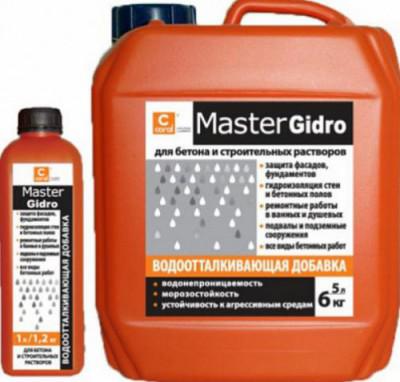
In essence, a plasticized mixture is all the same cement and sand (1: 3), but with the addition of plasticizer. Why do these additives need? Thanks to them, it is possible to dissolve the resulting solution to the consistency of the liquid sour cream. As a result, it is possible to reduce water consumption and improve spreadability.
The presence of a plasticizer provides excellent hardening, without cracking, which can be formed during shrinkage. In addition, it is important to add a spoon of washing powder into a mixture. If you put a tablespoon of powder on the bucket of the solution, then it is possible to achieve the same effect that when using a mixture with a plasticizer. But many manufacturers' factories use plasticizers in a certain proportion to prevent the process spreading the finished composition.
Now it is worth considering the consumption of a cement-sand mix of a certain brand and for specific cases. Average flow Dry cement-sand mixture will be 1 m2 of about 1.7-1.9 kg. In this case, the fundamental factor is the thickness. If you need to process 1 m2 of the surface with a layer thickness of 2 mm, the material consumption can be 3.6 kg. With a thickness of 5 mm - 9 kg.
In practice, the situation is as follows: when pouring the floor, the thickness of which will leave 10 mm, the material will leave 21-22 KSH / M2. Taking into account this data, it can be concluded that 400 kg of Peskobeton M300 will go to 20 m2.
Now consider the types of materials and their consumption:
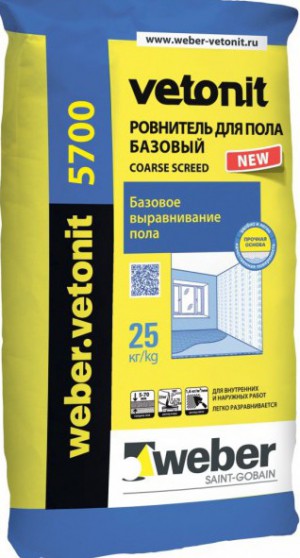
Features of calculation
Regardless of what purpose it is necessary to use the mixture, to obtain 1 m3 requires a sand cube. To create a concrete screed, the required amount of cement is calculated taking into account the proportion of 1: 3. Thus, for obtaining necessary mix You need to take 465 kg of sand. To perform a screed, still construction mixtures M150 and M200 are used, for obtaining cement M400 and M500, the consumption of which will be 490 and 410 kg per m3.
On the video - cement sandy mixture, GOST:
When the construction of walls is underway with the help of a sandy-cement mixture, then the traditional is considered the proportion of 1: 4. Thus, 1 m3 will be enough 350 kg. If masonry is underway silicate brick, then the flow will be less - 0.22 m3. For the construction of bearing walls requires to use higher grades cement. When lime is present in the solution, then it is necessary to use the proportion of 1: 3. Read more about the flow rate of cement sand mixture on 1m2 is written.
The process of adding water is carried out "to the eye" according to how thick the consistency you want to get. Also, a lot depends on the characteristics of the material at the time of calculating the consumption. In this case, viscosity, density and drying time play not the last role.
The cement-sand mixture is today one of the most sought-after building materials. But a wide range of these products very often complicates the process of choosing a suitable composition. It is also very important to take into account the consumption of the mixture, because it is its own for performing certain works. Perhaps you will be interested to know what. The link describes.
In the area of \u200b\u200bconstruction, dry mixes are in virtually all major technological stages. Quite often they are used in the repair (restoration). The specificity of this or that composition is largely determined by the type of binder. The theme of this article is their species, characteristics and indicative price of products. The general TU at the CPS is set out in detail in GOST No. 31357 of 2007.
The main components of such compositions are sand and cement. The number that stands after the LITERA "M" means the load (kg / cm2), which can withstand the hardened layer. It is necessary to consider that this indicator is indicative, since much depends on such factors as the correctness of the preparation of the solution from the mixture, compliance with the technology of work and a number of others. For example, for the M150 CPS, it approximately equals 150 kg / cm2.
Characteristics:
- Composition and proportion. In some CPS (for example, M100, M150) should not be organic impurities.
- The ability to hold water (GOST determines at least 90%).
- Frost resistance (expressed in cycles).
- Grappling time.
- The coefficient of overlap (should not be 10).
- Consumption of cement-sand mix on 1m2.
- The thickness of the applied layer.
1. If there are mixtures with similar characteristics on sale, before you buy a specific composition, you need to analyze the ratio of the last two indicators - thickness and consumption (kg / m2). Practice shows that the acquisition of the CPS at a higher price in total expression is more cost-effective.
2. Manufactured by the manufacturer consumption on M2 oriented to a professional, and high-class. Therefore, when evaluating the feasibility of buying a CPS also take into account. The actual consumption of plaster, the solution on the masonry or the screed will be more about 8-12%.
Varieties
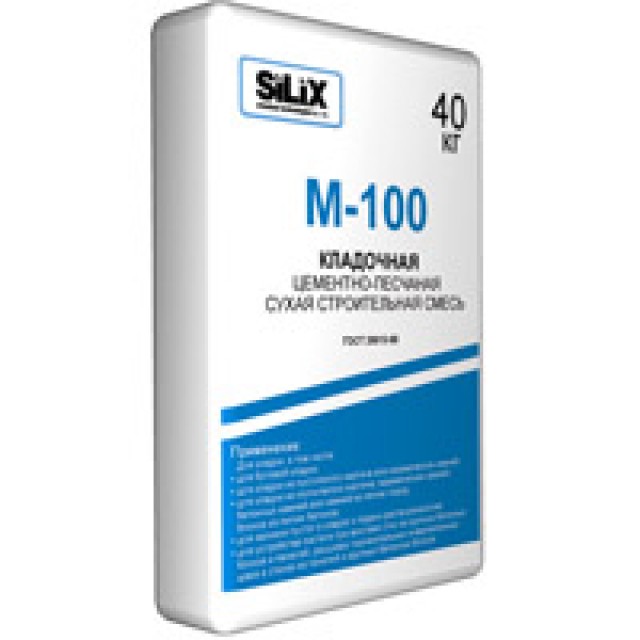 Used for the preparation of cement-sand plaster solutions. In addition to the main components there is lime in it. Because at the expense of it, the share of cement is reduced, M100 is characterized by a smaller cost. Such formulations, except plaster, are used to level the base and eliminate small defects of surfaces (cracks, cracks, chosen).
Used for the preparation of cement-sand plaster solutions. In addition to the main components there is lime in it. Because at the expense of it, the share of cement is reduced, M100 is characterized by a smaller cost. Such formulations, except plaster, are used to level the base and eliminate small defects of surfaces (cracks, cracks, chosen).
This brand is considered universal and used when conducting various technological operations. The cement-sand mixture M150 is equally well suited for the preparation of plastering, masonry. It is used in the arrangement of screeds, various repair work. In principle, in everyday life, M150 will replace any other. If you correctly decide on the required characteristics cement mortarA change in the ratio of components can be achieved to improve certain properties of the final product. The relevance of these compositions is influenced by their acceptable cost.
Characteristics M150:
- Recommended layer thickness (mm) - from 5 to 50.
- Consumption per m2 is about 16.5 kg (1 cm).
- Time (hour): Camping cement mixture - 2, hardening - 24.
Buying a ready-made masonry solution of the brand 150, you need to see what additives are available in its composition. For example, whether it corresponds to the requirements for frost resistance. It is also important and the thickness of the layer for the consumption recommended by the manufacturer on M2.
These cement-based mixtures are often called mounting and masonry. The M200 CPS is produced in several modifications, each of which is focused on a specific application - preparation of plaster, masonry solution, for a screed and even foundation. The resulting artificial stone (layer) is characterized by sufficient strength. Approximate consumption (with a thickness of 5 mm): 7.5-8.5 kg / m2.
The data of the mixture in everyday life is called sandbetone or foundation CPS. Their price is somewhat higher, and the scope of use is not as large as the compositions of M150. Mixtures cement-sand are used where such a characteristic, as durability, is one of the main. It is advisable to buy for masonry solutions when installing block structures, arraying for massive screeds and the like. But for M300 plasters does not fit. Approximate consumption on the screed - 19.5 kg.

Self-preparation
Several factors affect the proportions. First, the prescriptions of the solution; secondly, cement marks; Thirdly, the dates of his release. For some reason, many forget about the latter. It is necessary to consider that when storing cement, even under the appropriate conditions, it gradually loses its original properties. It is taking into account this that his share should increase somewhat, depending on the storage term. Therefore, all values \u200b\u200boccurring on the Internet are only approximate, not taking into account all the features of the preparation of the composition.

1. For screeds.
As a rule, cement grades 400 or 500 are taken. In the first case, the proportion is 1 to 2, in the second - 1 to 3. Reduce the likelihood of cracks in the hardened layer, it is possible by adding fibrovolock to the CPS to the CPP for the calculation of 0 , 7-0.9 kg / m3 of the mixture.
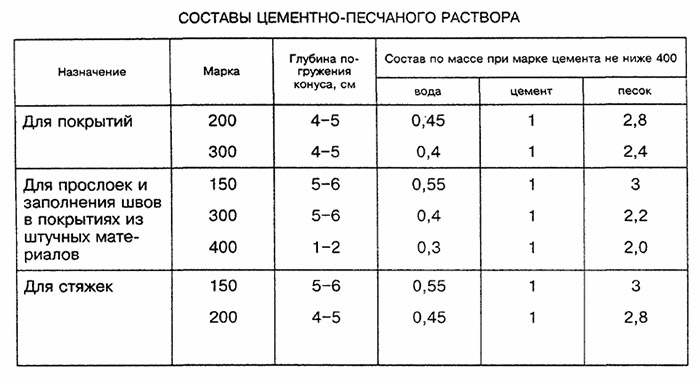
2. For masonry.
The quality of work is largely determined by the seam thickness. In this regard, much depends on how carefully prepared (succeeded) sand. Therefore, on 1 part of the cement, it is usually taken from 3 to 5 parts of this bulk material.
Mixing mix must be done in small quantities. Wizards first try quality on separate bricks, experimental by determining needed proportion For the available binder and sand. At the same time, the approximate consumption of cement on the masonry becomes also understood. This allows you to slightly optimize spending.
3. Cement mortar for plaster.
It is enough to take the binding brand M200-M300. The recommended proportion is 1 to 3.
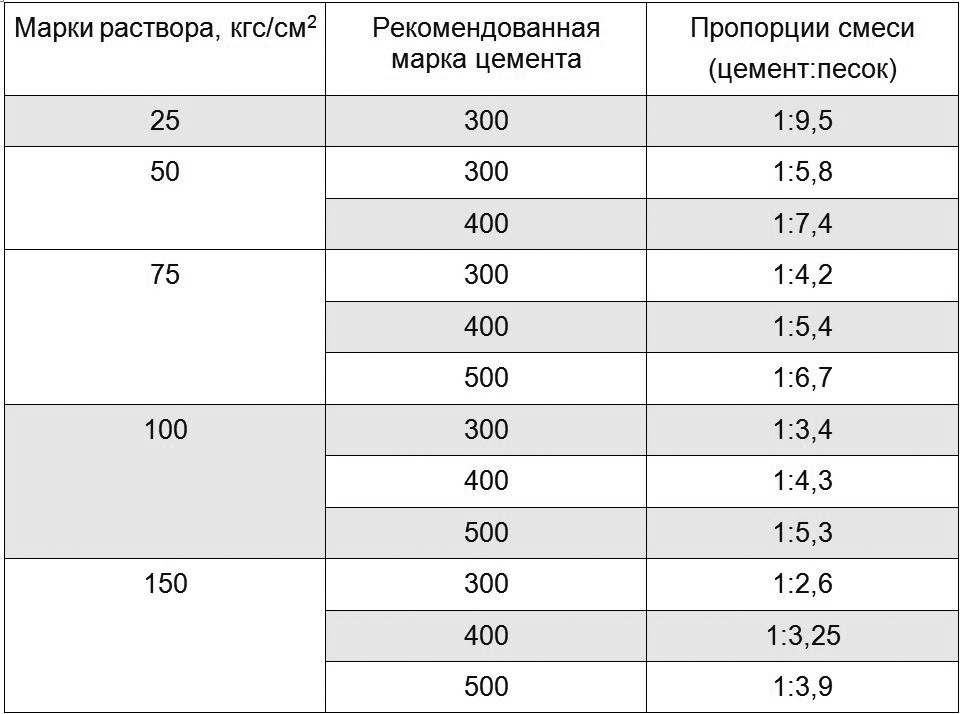
Nuances of manufacturing CPS
1. The quality depends not only on the proper selection of components (by brand, grain), but also on the thoroughness of mixing. Manually achieve this almost impossible, even if ready and ready (shop) mixture. In everyday life it is advisable to use the nozzle to the perforator (e / drill). This adaptation is not a deficit, and its price does not exceed 210 rubles.
2. Attempts to reduce the consumption of cement by increasing the fraction of the sand will not lead to anything good. It will decrease the elasticity of the solution, cracks will appear, chips, the fittings are screamed in the screed - and this is not a complete list of "surprises". Manipulated with the ratio of components can be only within the recommended proportions.

3. When storing cement for six months, it loses its properties by approximately half. In such cases, proportions should be changed.
4. Do not forget about the water. Its excess leads to a decrease in the strength of the artificial stone and increases its curing time.
The cost of mixtures largely depends on the ratio of components and the type of additives that change the individual characteristics of the composition.
* Data on cement-sand mixtures averaged, in relation to the Moscow region. Recommended consumption is indicated individually for each composition.
** For packages 50 kg.
Cement-sandy mixtures belong to multifunctional and universal compositions, without which no construction or repair work. The scope of application includes masonry of walls and structures from small-piece elements, including carriers, alignment of surfaces and preparations of them before subsequent trim, plastering walls and ceilings, pouring screeds, manufacture paving tile and borders. The characteristics and the cost of the CPS depend on the proportions and the quality of the two main components: cement and sand, if necessary, introduces modifying impurities. When choosing a particular brand, its purpose is taken into account, an estimated flow rate of 1 m2, the compliance of the strength of expected loads and other conditions.
General requirements are regulated by GOST 28013-98. This standard takes into account how specifications Mixes in dry state and parameters at the end of solidification. The generally accepted marking of the CPS denotes the tensile strength for the frozen solution. At the moment, the plants produce ready-made mixtures of the following brands:
- M100 is a cement-sand mixture with a minimum ratio of the binder to the filler and the addition of carbonade lime. This type refers to the cheapest and used for internal and external plastering works. Due to the low strength, M100 is not suitable for responsible and loaded structures.
- M150 - a brand with universal characteristics optimal in terms of "price-reliability". Depending on the purpose, it is used as plaster, a masonry mixture or solution for general construction and installation work.
- M200 - as well as the previous one, is produced in three versions. Installation and masonry cement mixture with such a strength recommended to buy when erecting vertical walls, universal - for fill ribbon foundationsThe third type is used for plaster.
- M300 (sandbetone) - CPS with increased strength, is selected in concreting of loaded sections: foundation, floor ties, overlap, walls. In addition to the high quality cement (not lower than M400), both river and quartz and other large-fractional sand (up to 6 mm) are included in such mixtures.
- M400 - CPS for mounting the supporting structures, the construction of the foundations of any type and manufacture of the progress. A brand with such strength characterizes the presence of plasticizers in the composition and exceeding the proportions of cement over the volumetric parts of the sand.

Consumption and proportions of solutions depending on the scope of application
When choosing the ratios of cement and sand or a specific finished brand, the following recommendations are taken into account:
- A cement-sand mixture M150 is used for a floor screed. The proportions when adding Portland cement M500 - 1: 3 (for M400 1: 2, respectively). To improve the strength characteristics, it is desirable to introduce a little fibrovolok. Similar ratios are selected during the independent manufacture of peaobeton M300, but in this case a filler with large grain is applied.
- When preparing masonry solutions, the emphasis is on the use of high-quality components, impurities in the sand are not allowed. The proportions depend on the type of construction materials connected and vary from 1: 3 to 1: 6, the cement consumption for brickwork and butt stone is calculated from the time-tested ratio of 1: 4.
- The finishing compounds are put forward high demands in terms of plasticity and adhesion, when applied, it is important to adhere to the layer thickness specified by the manufacturer and develop a mixed mixture as soon as possible in order to avoid the formation of solid fractions. Recommended ratio when the cement-sand plaster is 1: 3.

The quality and performance of the CPS are directly related to the type of binding and the size of the grains of the filler. For example, compositions based on low-ignite cement are optimal when pouring screeds, with a small impurity of lime - for plastering, with homogeneous fractions - for masonry of walls, with the addition of large particles (2-6 mm) - for concreting foundations and manufacturing of the progress. Most manufacturers have their secrets and specialize in the release of cement-sand mixtures with a certain purpose. At the same time, they can be bolded to be called universal: while complying with all the rules, the kneading and installation of the CPS are equally well suited for both internal and external work.
An important characteristic is the flow rate, the manufacturer indicates it into kg per 1 m2 along with the recommended thickness of the applied layer. The size of this indicator affects the size of the fractions and the nature of the work. The average consumption on the screed is 1 cm - 15-17 kg per 1 m2, when applied to the walls - from 17. Calculate the required amount of solution during masonry or repair is harder, in the absence of experience, it is better to knead the cement with minor portions. When using the CPC for alignment and decoration of walls and ceilings, the only way to reduce the consumption of plaster is pre-priming surfaces. In this case, 1 m2 with a layer thickness of 5 mm leaves about 7.5-8.5 kg of dry mixture with standard size Filler grains and up to 10 kg in fine-flowing brands.
The finished compositions are inducing with water according to the proportions specified by the manufacturer, with an independent knee of 1 kg of the binder takes no more than 0.8 liters of liquid. The violation of this condition leads to a decrease in the strength of the cement-sand mixture and prolongs the hydration process. On average, it is 28 days, if necessary, it is necessary to buy a brand with plasticizers, but its cost will be higher.
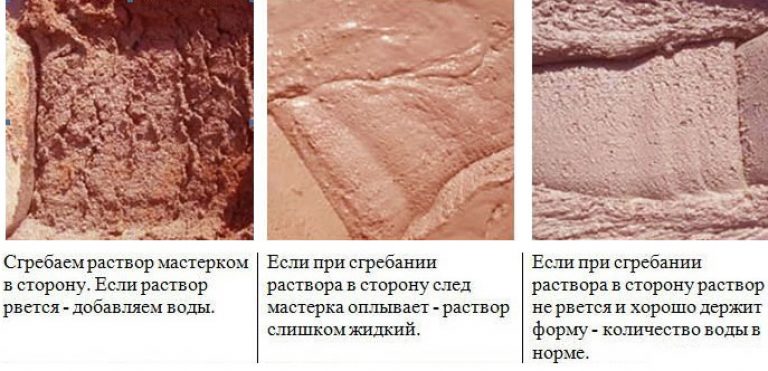
Preparation of mixtures with your own hands
Despite all the advantages of ready-made masonry solutions (verified proportions, correctly selected cement, plasticity, clear conditions of use) often arises the need for self-injury CPS. Particular attention is paid to the preparation of components and achieve a mixture of a homogeneous state. When using concrete mixers, dry cement and sand is added to water, with a manual knee or use of a drill with a nozzle - on the contrary. In the latter case, water is entered into portion within the selected ratios. Similarly, there is a possession of ready-made factory mixtures.
Most of the dyes or modifiers are introduced in a dry state, the exception is made when they are kneaded using concrete mixer. The resulting cement solution is left for 10-15 minutes, after which they are stirred again. The viability of dilute CPS is about 1 hour, during this time it is necessary to spend the entire prepared volume. The solidification compositions are unsuitable, mixing the binder and sand is also not recommended in advance.
The final set of strength of the cement mortar occurs after 28 days (it is impossible to start the finish), during this time the treated surfaces and structures need to be careful: moisturizing, closing from the Sun.
Cost of ready-made mixes
| Name of the brand | Recommended application scope | The estimated consumption of cement-sand mixture per 1 m2 with a layer thickness of 10 cm | Weight, kg | Price per pack, rubles |
| Azolith M100 | Laying of walls from individual elements, preliminary alignment of surfaces | 15 | 25 | 120 |
| Rusean M150 | Floor alignment, wall plaster and ceiling, tile laying | 17-18 | 40 | 140 |
| Dry mounting and masonry mix M200 | Concrete ties, grinding walls | 17-19 | 145 | |
| Stone flower M150. | Masonry, assembly and repair work, wall preparation and ceilings before finishing | 15-17 | 50 | 135 |
| Yumix M150 | Walking, masonry walls of bricks and other small products, floor screed | 20-25 | 150 | |
| CPS M200 "Quality Floors" | CPS for a tie of the floor in the premises of any type, laying of brick and foam blocks | 20-22 | 30 | 120 |
| Peskobeton Finstroy M300 | Pouring concrete forms and foundations, construction of structures experiencing increased loads | 16-18 | 40 | 90 |